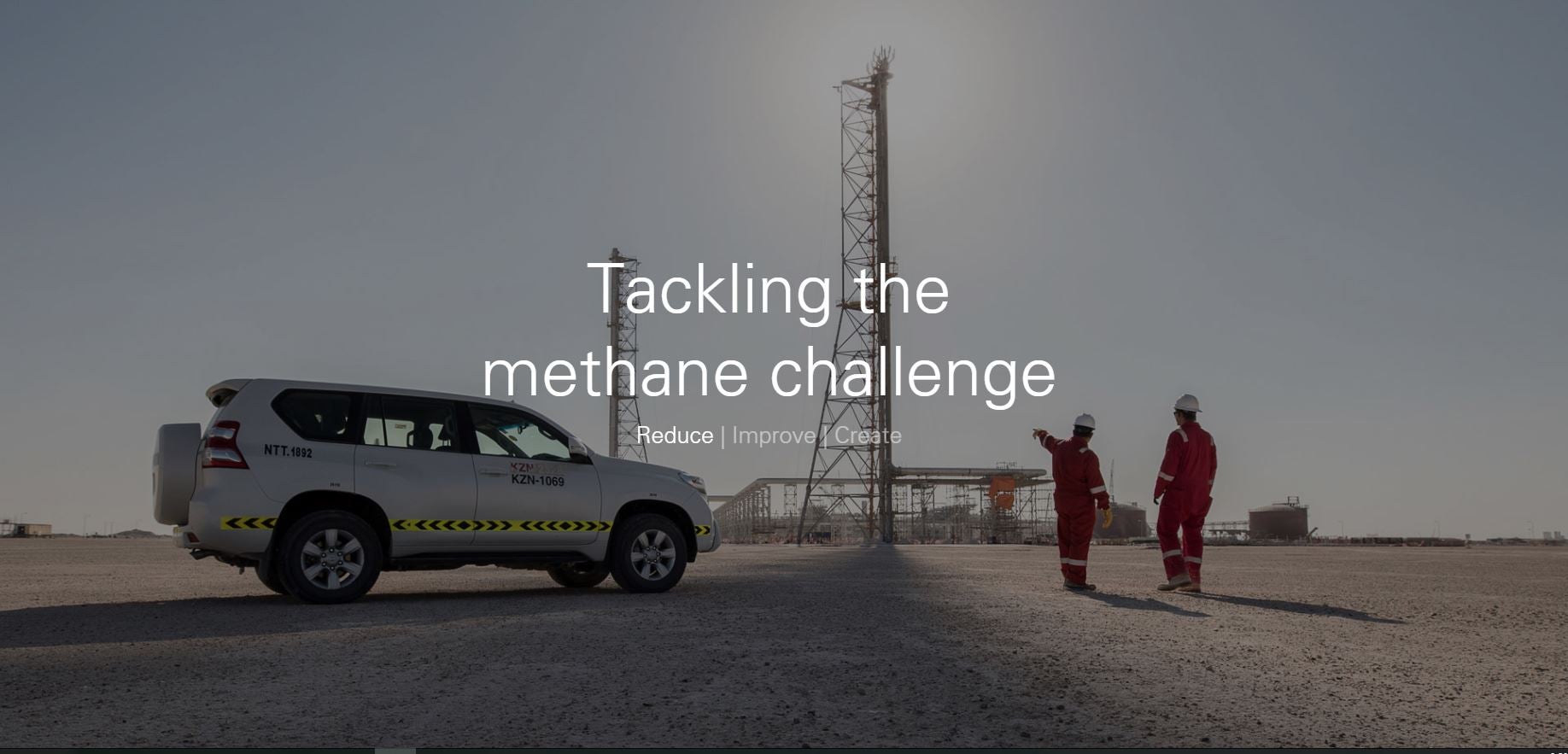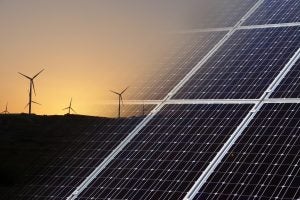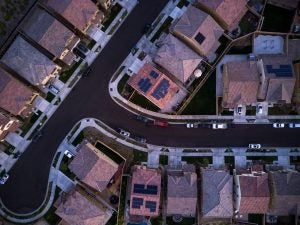 As part of its Energy Transition report, BP announced a stringent new quantitative target to address its emissions of methane, a powerful greenhouse gas pollutant. Effective immediately, BP will target limiting methane emissions from its global upstream oil and gas operations that market natural gas to 0.2 percent. Ben Ratner, Senior Director with EDF+Business, sat down with Paul Jefferiss, Head of Policy, BP, to learn more.
As part of its Energy Transition report, BP announced a stringent new quantitative target to address its emissions of methane, a powerful greenhouse gas pollutant. Effective immediately, BP will target limiting methane emissions from its global upstream oil and gas operations that market natural gas to 0.2 percent. Ben Ratner, Senior Director with EDF+Business, sat down with Paul Jefferiss, Head of Policy, BP, to learn more.
Energy Exchange
Sitting down with BP to discuss its new methane target
EPA’s updated annual oil and gas methane inventory doesn’t convey entire picture
 The U.S. Environmental Protection Agency (EPA) released its annual update to the 2016 U.S. Inventory of Greenhouse Gas Emissions (GHGI) yesterday, showing a slight decrease in total greenhouse gas emissions from 2015 to 2016.
The U.S. Environmental Protection Agency (EPA) released its annual update to the 2016 U.S. Inventory of Greenhouse Gas Emissions (GHGI) yesterday, showing a slight decrease in total greenhouse gas emissions from 2015 to 2016.
Methane, a potent greenhouse gas and the main constituent of natural gas, is responsible for roughly a quarter of global warming we see today. The GHGI estimates that 2016 methane emissions from the oil and gas industry were 8.37 million metric tons, down just over one percent from 2015 levels.
This decrease is misleading – it’s too slight a dip to indicate that industry is getting a better handle on methane. Studies also suggest that the inventory misses vast amounts of emissions from abnormal process conditions, or super-emitters.
This cleantech hotspot is giving New York and California a run for their money
 California and New York often steal the spotlight on cleantech innovation, but those in the know are keeping their eye on Illinois.
California and New York often steal the spotlight on cleantech innovation, but those in the know are keeping their eye on Illinois.
The energy sector has been undergoing rapid change in the Land of Lincoln, thanks to a slew of innovative initiatives. More than ever before, Illinois’ buildings are more efficient, its electric grid is more modern, and its electricity use is smarter. And the state is just getting started.
Powering all of the buildings in the United States costs over $400 billion a year. Many of these buildings were built long before modern energy codes and, therefore, use more power than they should. This gap presents a ripe opportunity: The retrofit industry is now valued at $20 billion, and Illinois is paying attention. The state topped the list of most LEED-certified buildings from 2013–2015, and has remained in the top 5 since. Read More
Clean energy bill: A roadmap for New Jersey
 Today, New Jersey lawmakers will be voting on a “Clean Energy Bill,” a piece of legislation that can help the state transition to a 21st-century clean energy economy, and set us on a path to becoming a national clean energy leader once again.
Today, New Jersey lawmakers will be voting on a “Clean Energy Bill,” a piece of legislation that can help the state transition to a 21st-century clean energy economy, and set us on a path to becoming a national clean energy leader once again.
Gov. Phil Murphy’s pledge to source 100 percent of the state’s electricity from clean energy by 2050 points us in the right direction. But we need a roadmap to get there – one that will boost the state’s economy and reduce harmful pollution.
The clean energy bill paves the way to invest in clean energy – a critical step toward achieving a more resilient, healthier future for New Jerseyans. We can only move forward if elected officials vote for it, accelerating the adoption of renewable energy and energy efficiency. Read More
Illinois blazes new trail in anticipation of private microgrids using utility wires
 On May 9, Andrew Barbeau, senior clean energy consultant for Environmental Defense Fund, will speak at the Microgrid 2018 conference. This year’s theme is Markets and Models for the Greater Good, and Andrew will discuss the effort to create a new microgrid tariff for third-party-managed microgrids as described in this post. You can register for the conference here.
On May 9, Andrew Barbeau, senior clean energy consultant for Environmental Defense Fund, will speak at the Microgrid 2018 conference. This year’s theme is Markets and Models for the Greater Good, and Andrew will discuss the effort to create a new microgrid tariff for third-party-managed microgrids as described in this post. You can register for the conference here.
Imagine you and your neighbors have solar panels on your roofs. You want to create a mini-power grid so that your neighborhood can operate solely on your panels’ electricity, even sending excess power from one home to another. And if there’s a storm that affects the main power grid, your homes can disconnect and stay powered.
This is the vision that microgrid proponents have promised for the past decade: small sections of the broader grid that incorporate rooftop solar and batteries, and can isolate from the grid as a whole when needed. Yet, this promise faces a major hurdle: The utility owns the wires that connect your homes and has an exclusive monopoly on that electrical infrastructure. This has driven most microgrid projects in the U.S. to either be completely “behind the meter” of a single customer, or owned and managed by the utility itself.
A new agreement with Illinois’ largest utility, ComEd, is poised to jump that hurdle. Working with Environmental Defense Fund (EDF) and the Citizens Utility Board (CUB), ComEd will begin a process this year to allow customers or third parties to develop and manage their own microgrid projects – working with the utility’s existing infrastructure rather than having to avoid it.
We have received lots of questions on how this will work. Here are your questions answered. Read More
How location-based prices and utility rewards could help California’s electric grid
 By Larissa Koehler, Jamie Fine
By Larissa Koehler, Jamie Fine
Distributed energy resources, from rooftop solar panels to smart well-weatherized homes and timed electric vehicle charging, are vital pieces of the clean energy puzzle. Coordinating how and where to encourage them in a way that benefits the electric grid, the environment, and Californians can be complicated. In its’ Integrated Distributed Energy Resource proceeding, the California Public Utilities Commission (Commission) recently asked stakeholders [PDF] to “consider how existing programs, incentives, and tariffs can be coordinated to maximize the locational benefits and minimize the costs of distributed energy resources.”
This key step forward in the proceeding is potentially a big deal. Why? Rocky Mountain Institute’s report puts it this way [PDF]:
“More granular pricing, capable of reflecting marginal costs and benefits more accurately than today’s rates do, will provide better incentives to direct distributed resource investments, regardless of whether investments in and management of [distributed energy resources] are undertaken by customers, by utilities, or by third-party service providers.”
By reflecting both costs and benefits in retail prices that electricity customers pay, California can modernize the grid while spurring the efficient and fair build out of distributed clean energy resources. This can help the state substitute traditional and inflexible polluting resources [PDF] with a variety of more nimble distributed energy resources where the grid can handle them. What’s more, distributed energy resources can lead to cleaner air in areas traditionally burdened by higher levels of harmful air pollution. They can achieve all this while bolstering the electric grid and protecting the health of the environment and of Californians. Read More









